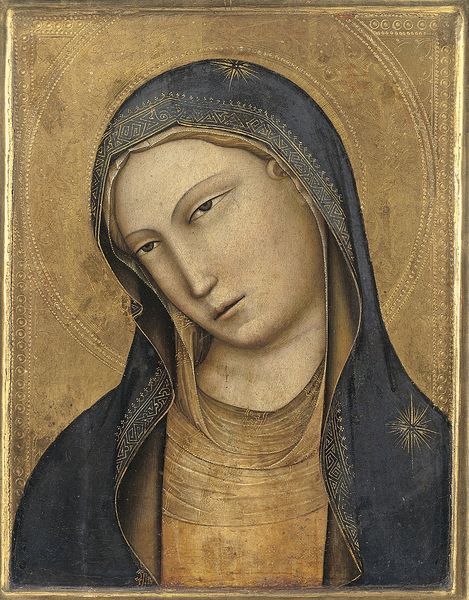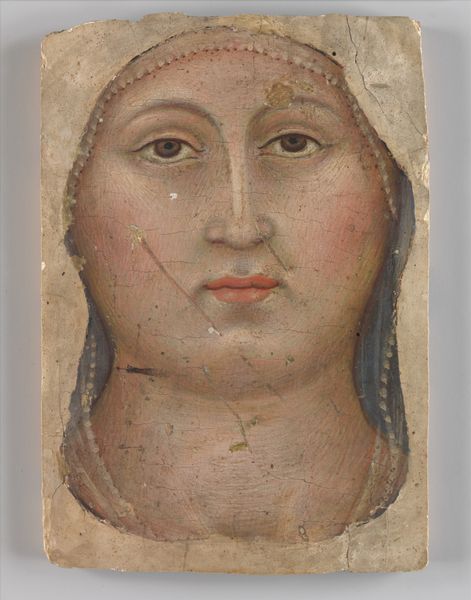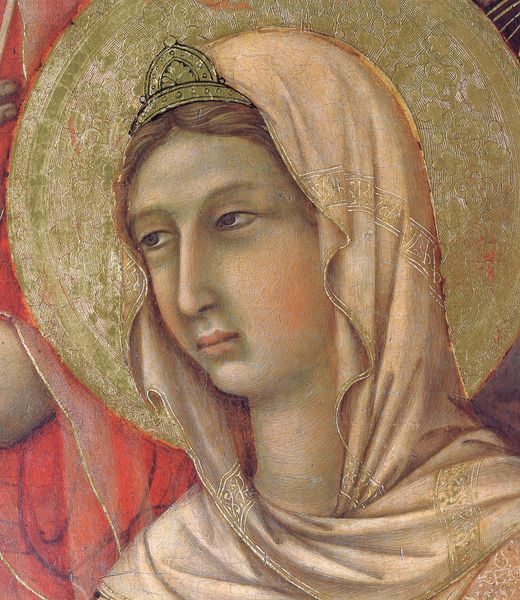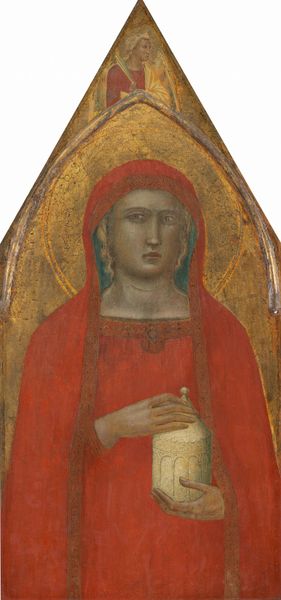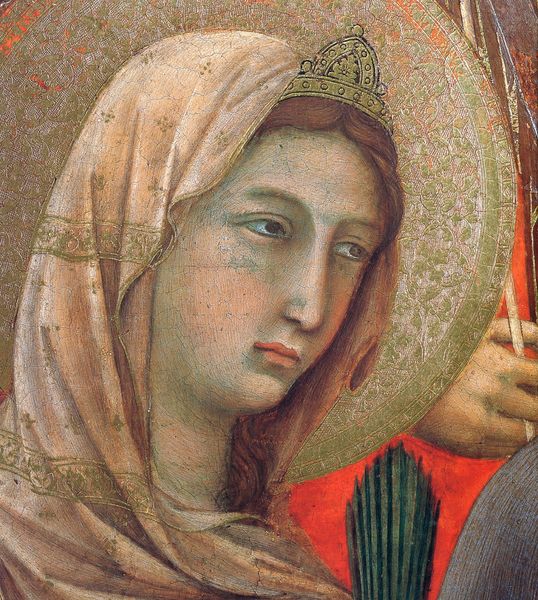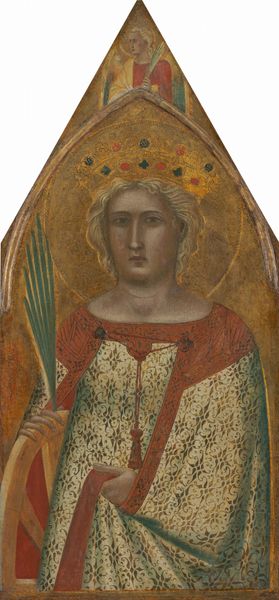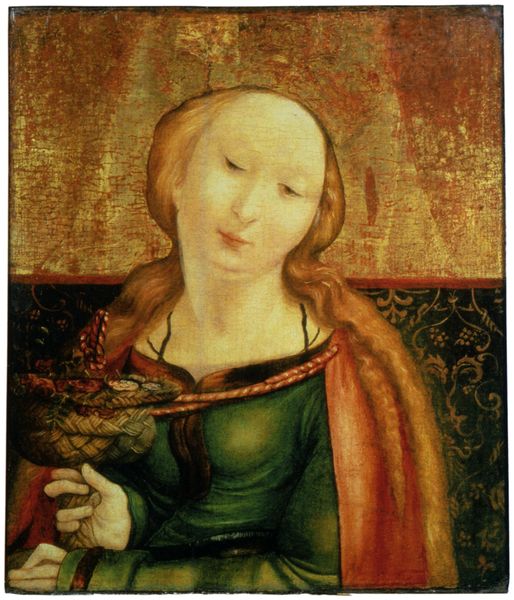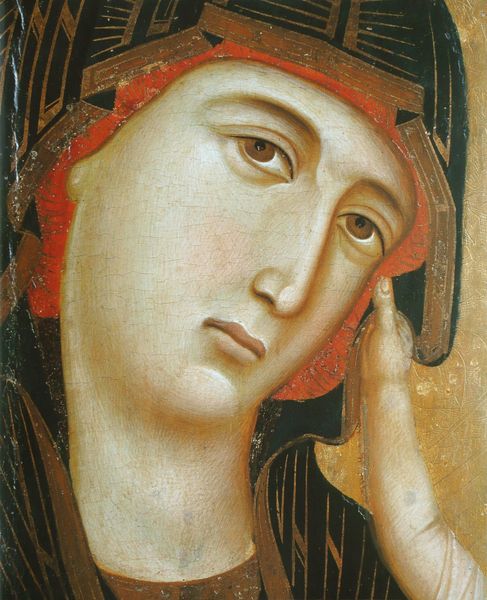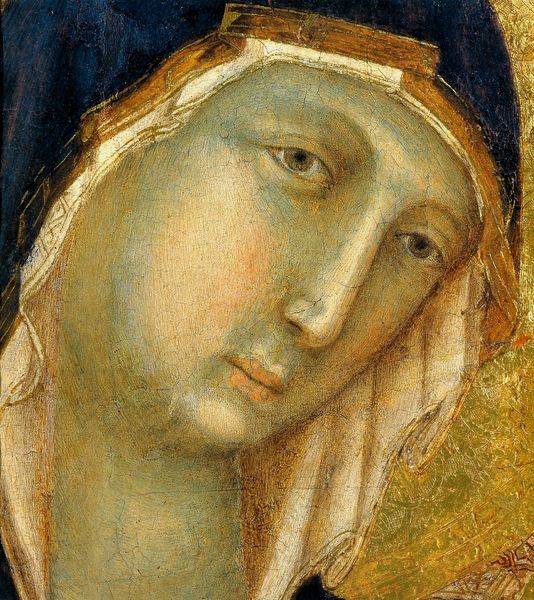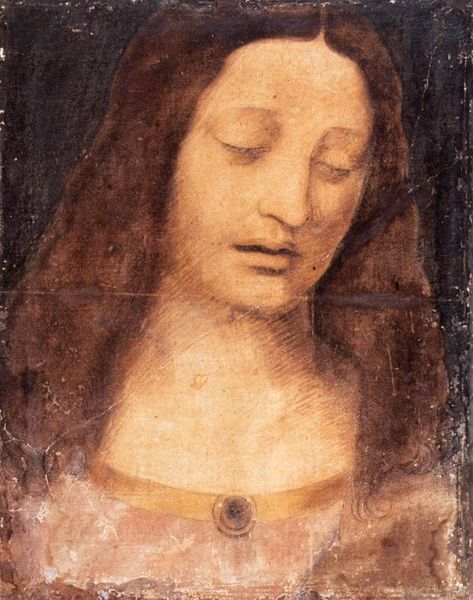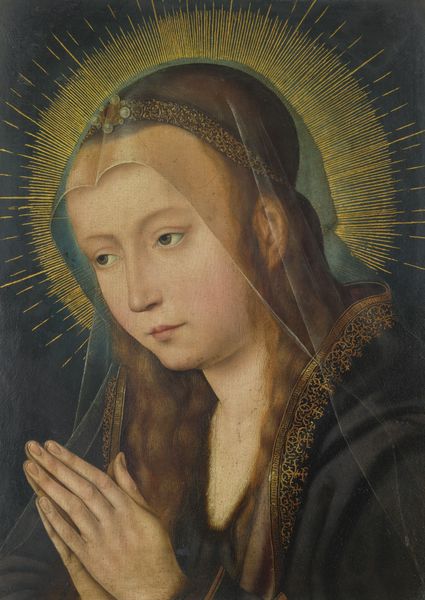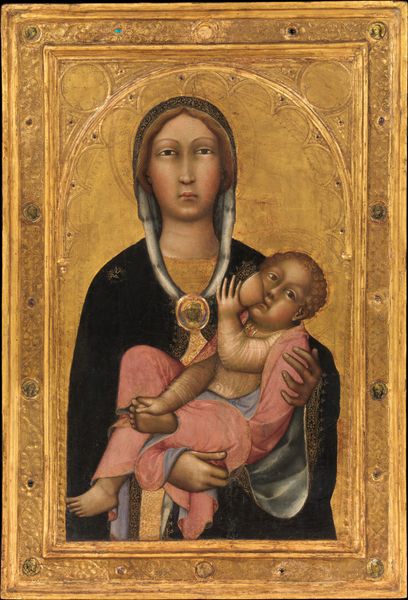
tempera, painting
#
portrait
#
medieval
#
tempera
#
painting
#
oil painting
#
history-painting
#
italian-renaissance
Dimensions: 36.4 x 27.8 x 1.6 cm
Copyright: Public Domain
Editor: Here we have Niccolò di Buonaccorso's "Virgin (fragment)," painted around 1377-1383. It's tempera on wood, and the damage is pretty intense! Despite its fragmented state, the Virgin's face still has such a gentle, almost melancholic feel. What symbols or ideas are conveyed by the colors and her expression? Art Historian: That's a keen observation. Even in this state, the cultural memory embedded in the image remains potent. The blue of her mantle, though faded, still speaks to its historical association with royalty, holiness and the heavens, drawn from Byzantine iconography, with its connection to emotional depth and the transcendent. Editor: Byzantine? I would have said Italian Renaissance, based on the tag... Art Historian: Indeed. We can see its emerging influence through the softening of features and the move toward a more naturalistic representation of the face. However, consider the halo: the gold signifies divinity and holiness, adhering to a long visual tradition of indicating sacred figures, despite the influence of the Italian Renaissance in Buonaccorso's time. It emphasizes her spiritual authority. Does that connection of the halo as symbol in time resonate? Editor: Absolutely! That combination is fascinating – how different styles coexist. So, the emotional impact isn’t just from the expression but also from centuries of understanding these symbols. Art Historian: Precisely! Even the "fragment" itself speaks to the ravages of time, loss, and survival of memory. A fragment is a symbol. It encourages us to consider the layers of history. Editor: That makes you wonder about what stories these images hold. Thank you, that was fascinating. Art Historian: The pleasure was mine. Always look beyond the surface.
Comments
No comments
Be the first to comment and join the conversation on the ultimate creative platform.
